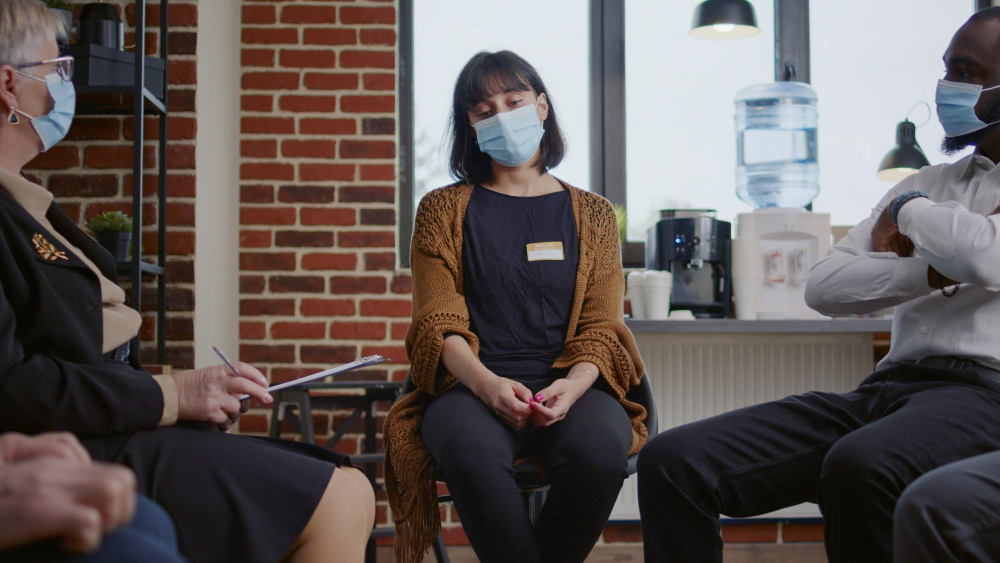How to Address Alcohol and Underage Drinking
April 17, 2024
Take action against alcohol & underage drinking. Discover practical steps to address this issue & protect our youth.
Addressing Underage Drinking
When it comes to addressing alcohol and underage drinking, it is essential to consider the impact of parental problem drinking and its influence on parenting skills. These factors play a significant role in the development and well-being of adolescents.

Impact of Parental Problem Drinking
Parental problem drinking can have adverse effects on adolescent development and adjustment. It interferes with parenting skills and marital relations, potentially leading parents to model ineffective coping strategies and other problem behaviors. Children with parents who have drinking problems are at a higher risk of engaging in alcohol and drug use as well as experiencing psychological problems.
Problem drinking by parents may negatively influence important parenting skills that serve to nurture and provide guidance for children. It can contribute to inconsistency or unpredictability in parenting behaviors and result in poorer monitoring of adolescent behaviors. Problem-drinking parents may also provide lower levels of parental nurturing and emotional availability, increasing the risk of adolescent drinking.
Furthermore, problem-drinking parents frequently demonstrate a greater tolerance of adolescent drinking and other substance use, implicitly approving their children's alcohol use. This can normalize drinking behavior for adolescents and contribute to increased alcohol consumption.
Influence on Parenting Skills
Problem drinking by parents can impair marital and family relations, which, in turn, negatively affect child and adolescent development. It has been associated with higher levels of marital conflict and spousal or child physical abuse. These negative family dynamics can have a lasting impact on an adolescent's emotional well-being and increase the likelihood of engaging in risky behaviors like underage drinking.
Addressing parental problem drinking is crucial for creating a supportive and healthy environment for adolescents. By seeking help and treatment for their own drinking issues, parents can improve their parenting skills and provide a more stable and nurturing environment for their children.
It is important to note that addressing parental problem drinking requires a comprehensive approach that involves education, counseling, and support. Resources such as therapy, support groups, and treatment programs can provide parents with the tools and guidance necessary to overcome their drinking problems and create a positive impact on their children's lives.
By recognizing the impact of parental problem drinking and its influence on parenting skills, we can take steps towards addressing alcohol and underage drinking effectively. Supporting parents in seeking help and providing them with the necessary resources can contribute to healthier family relationships and reduce the risk of underage drinking among adolescents.
Risks Associated with Adolescent Alcohol Use
Adolescent alcohol use poses significant risks and can have detrimental effects on both the individual and their development. Understanding the statistics on adolescent drinking and the effects it can have on adolescent development is crucial in addressing and preventing underage drinking.
Statistics on Adolescent Drinking
Adolescent drinking is a prevalent issue that needs to be addressed. According to the National Institute on Alcohol Abuse and Alcoholism (NIAAA), about 23.1% of adolescents report drinking by 8th grade, and approximately 36.7% report being drunk at least once by 12th grade. These statistics highlight the importance of early intervention and prevention strategies to address underage drinking.
Effects on Adolescent Development
Accumulating evidence suggests that alcohol use, especially binge drinking, can have negative effects on adolescent development and increase the risk of alcohol-related problems later in life, as stated by the NIAAA. The effects of alcohol on adolescent development can manifest in various areas, including academic success, body image, and substance misuse.
Parental problem drinking plays a significant role in influencing adolescent development and adjustment. It can interfere with parenting skills and marital relations, leading to inconsistencies and unpredictability in parenting behaviors. Problem-drinking parents may provide lower levels of parental nurturing and emotional availability, increasing the risk of adolescent drinking. Moreover, problem-drinking parents frequently demonstrate a greater tolerance of adolescent drinking, implicitly approving their children's alcohol use, as noted by the NCBI.
It's important to note that allowing children to drink in the home does not appear to help them develop an appropriate relationship with alcohol, according to the NIAAA. In fact, research indicates that children raised by authoritative parents, who convey consistent and authoritative messages about alcohol use, tend to fare better in terms of body image, academic success, and substance misuse compared to their peers.
To prevent the negative effects of adolescent alcohol use, parents, educators, and the community as a whole need to play an active role in addressing and preventing underage drinking. By providing consistent and authoritative messages about alcohol, implementing effective prevention strategies, and promoting early intervention, we can help protect adolescents from the risks associated with alcohol use and support their healthy development.
Preventing Underage Drinking
Preventing underage drinking requires a collaborative effort from parents, teachers, and the community as a whole. By addressing this issue proactively and providing the necessary support and guidance, we can help reduce the risks associated with underage alcohol use. Two key factors in preventing underage drinking are the role of parents and teachers, as well as the importance of early intervention.
Role of Parents and Teachers
Parents and teachers play a crucial role in shaping adolescents' attitudes and behaviors towards alcohol. Research has shown that children whose parents allow them to drink are more likely to quickly transition from their first drink to unhealthy patterns of drinking, such as binge drinking. Regular conversations about alcohol and being a positive role model with their own drinking can help parents shape their kids' attitudes about alcohol and set them up to make healthy choices.
Teachers also have an essential role in preventing underage drinking. Universal school-based alcohol prevention programs can provide all students with the information and skills needed to prevent underage alcohol use. These programs can focus on raising awareness of the potential dangers of alcohol use, development of norm-setting and peer resistance skills, or a combination of approaches. By incorporating alcohol prevention education into the curriculum, teachers can help students make informed decisions about alcohol and develop the necessary skills to resist peer pressure and avoid engaging in underage drinking.
It is important for parents and teachers to work together as a team to reinforce consistent messages about the risks and consequences of underage drinking. By maintaining open lines of communication, sharing resources, and collaborating on prevention efforts, parents and teachers can create a supportive and educational environment that promotes healthy decision-making.
Importance of Early Intervention
Early intervention is key when it comes to preventing underage drinking. Research has shown that individually-delivered brief interventions lasting fewer than 5 hours can reduce alcohol use among adolescents. Classroom-based programs targeting alcohol use and other risk behaviors, such as tobacco use, illicit drug use, sexual risk, and antisocial behavior, may also have a positive impact on reducing adolescent alcohol use. Web- or computer-based universal programs can be effective in reducing adolescents' alcohol use when focusing on alcohol problems alone.
It is important to note that prevention programs should consider the psychological and cognitive developmental stage of adolescents when implementing universal school-based alcohol prevention programs. Tailoring the content to different age groups ensures that the information is age-appropriate and resonates with the target audience.
By intervening early and providing comprehensive prevention education, we can equip young individuals with the knowledge and skills necessary to make healthy choices regarding alcohol use. By working together as a community, we can create an environment that supports and encourages responsible decision-making, ultimately reducing the rates of underage drinking and its associated risks.
Legal Aspects of Underage Drinking
When it comes to addressing underage drinking, understanding the legal aspects is crucial. In Canada, every province is responsible for its own liquor laws and regulations surrounding alcohol consumption by minors. Let's take a closer look at the liquor laws in Canada and the penalties for offenses related to underage drinking.
Liquor Laws in Canada
The legal age to buy and consume alcohol varies across different provinces in Canada. In most parts of the country, the legal drinking age is 18. However, there are exceptions to this rule. For instance, in Alberta, Quebec, and Manitoba, underage drinking is permitted for younger teens under parental supervision within their residence.
It's important to note that each province has its own specific regulations regarding serving or providing alcohol to minors. Licensed establishments are strictly prohibited from serving alcohol to minors, and the penalties for contravention vary across provinces. For instance, in British Columbia, serving alcohol to a minor for the first time can result in a 10-day license suspension or a fine of up to $10,000.
Penalties for Offenses
In Canada, underage drinking and related offenses are taken seriously, and penalties can vary depending on the nature of the offense and the province in which it occurs. It's important to be aware of the potential consequences to deter underage drinking and promote responsible behavior.
Under section 320.14(1) of the Criminal Code in Canada, anyone operating a vehicle with impaired abilities due to alcohol or drugs can face charges and a fine of up to $1,000. It's crucial to emphasize the dangers of impaired driving and the severe legal consequences associated with it. Additionally, each province has its guidelines and penalties, which can be stricter than federal guidelines. For example, in Alberta, there are strict regulations regarding blood alcohol content levels for drivers, including a lower threshold for drivers under 18. Offenders convicted of impaired driving may face consequences such as a one-year driving ban, probation orders with conditions, and increased car insurance costs.
It's important to note that young offenders (ages 12 to 17) in Canada are usually dealt with in youth court and are subject to the Youth Criminal Justice Act (YCJA). The YCJA aims to hold young offenders accountable, impose meaningful consequences, promote rehabilitation, and reintegrate them into society. The maximum length of youth sentences ranges from two to 10 years, while extrajudicial measures are encouraged for appropriate cases involving young offenders.
Understanding the liquor laws and penalties associated with underage drinking is crucial for addressing this issue effectively. By promoting awareness of the legal consequences and fostering a culture of responsible alcohol consumption, we can work towards preventing underage drinking and ensuring the well-being of our youth.
Community-Based Prevention Strategies
To address the issue of alcohol and underage drinking, community-based prevention strategies play a crucial role. These strategies involve collaborative efforts from various stakeholders, such as schools, parents, local organizations, and community members, to create a supportive environment that discourages underage drinking. Two key components of community-based prevention strategies are school-based alcohol prevention programs and factors affecting alcohol use.
School-Based Alcohol Prevention Programs
Universal school-based alcohol prevention programs are an effective approach to provide all students with the necessary information and skills to prevent underage alcohol use. These programs can focus on various aspects, including raising awareness about the potential dangers of alcohol use, developing norm-setting skills, and building peer resistance skills. By targeting all students, regardless of their risk level, these programs create a comprehensive prevention approach.
Several evidence-based universal school-based alcohol prevention programs exist, including the LifeSkills Training program, the Unplugged program, the SPORT Prevention Plus Wellness program, Project ALERT, and the PAX Good Behavior Game. These programs are designed to address different age groups and consider the psychological and cognitive developmental stages of adolescents. They aim to equip students with the necessary skills to resist alcohol use and make informed decisions.
Factors Affecting Alcohol Use
Understanding the factors that influence alcohol use among youth is essential for effective prevention strategies. Research has identified multiple risk factors that increase the likelihood of alcohol use, including individual characteristics, peer influences, family experiences, school factors, and neighborhood experiences. These risk factors can contribute to the initiation and continuation of alcohol use among young people.
Additionally, protective or promotive factors exist in different areas of young people's lives and can mitigate the negative influences of risk factors or directly reduce the likelihood of alcohol use. These factors include individual resilience, positive peer relationships, strong family bonds, supportive school environments, and community engagement.
Community-based prevention strategies aim to minimize the exposure of youth to harmful risk factors while enhancing protective/promotive factors. By focusing on youth, these strategies have the potential to prevent early onset alcohol use, which is associated with an increased likelihood of alcohol dependence later in life.
Successful community initiatives rely on local coalitions that select effective preventive interventions and implement them with fidelity. These coalitions should include active, broad-based groups of individuals who are dedicated to preventing underage alcohol use and implementing evidence-based prevention strategies. By working collaboratively, community-based prevention efforts can make a significant impact in reducing rates of alcohol use among youth.
In conclusion, community-based prevention strategies for addressing alcohol and underage drinking involve school-based alcohol prevention programs and addressing the factors that influence alcohol use among youth. School-based programs provide universal prevention approaches by equipping students with the necessary skills and knowledge to resist alcohol use. Understanding the risk factors and protective/promotive factors associated with alcohol use can further inform prevention efforts. By implementing evidence-based prevention strategies and fostering community collaboration, communities can effectively prevent underage drinking and promote healthier behaviors among young people.
Effective Community Initiatives
To effectively address and prevent alcohol use, community-based initiatives play a vital role. These initiatives rely on local coalitions and evidence-based strategies to reduce the risk factors associated with alcohol use among youth. By implementing preventive interventions, communities can work towards achieving population-level reductions in alcohol misuse. Two key components of effective community initiatives include understanding the risk factors for alcohol use and implementing prevention strategies.
Risk Factors for Alcohol Use
Prevention efforts focus on minimizing the exposure of target populations, particularly youth, to harmful risk factors while enhancing protective factors that promote healthy behaviors. Early onset of alcohol use is associated with a higher likelihood of alcohol dependence later in life, making prevention efforts targeted at youth particularly important.
To address these risk factors, community initiatives must take into account factors such as peer influence, family dynamics, and societal norms. By identifying these risk factors, communities can tailor prevention strategies to target the specific needs of their population.
Strategies for Prevention
Implementing prevention strategies is a crucial step in reducing alcohol use among youth. Community-based prevention programs can be effective in changing factors that influence the risk of youth engaging in alcohol use. Some of the strategies that have shown promise include:
- Universal school-based alcohol prevention programs: These programs provide all students with the information and skills needed to prevent underage alcohol use. They can focus on raising awareness of the potential dangers of alcohol use, development of norm setting and peer resistance skills, or a combination of approaches. Examples of evidence-based universal school-based alcohol prevention programs include the LifeSkills Training program, Unplugged program, SPORT Prevention Plus Wellness program, Project ALERT, and the PAX Good Behavior Game [3].
- Individually-delivered brief interventions: These interventions are delivered to adolescents and have been shown to reduce alcohol use. They typically last fewer than 5 hours and can be effective in changing alcohol-related behaviors.
- Psychosocial programs: Programs that focus on developing peer resistance and other skills have been found to be more effective than alcohol-focused programs alone. Combining student and parent interventions can also have a positive impact on reducing students' alcohol use.
When implementing prevention strategies, it's important to consider the psychological and cognitive developmental stage of different age groups. Tailoring program content to meet the specific needs of adolescents can enhance the effectiveness of universal school-based alcohol prevention programs.
Successful community initiatives require active, broad-based coalitions that believe in the possibility of preventing youth alcohol use and are willing to engage in collaborative prevention activities. These coalitions should ensure the effective implementation of evidence-based prevention strategies and adhere to established guidelines. By working together, communities can make a significant impact in preventing underage drinking and creating a healthier future for their youth.
References
Learn About Clear Steps Recovery and How We Can Help You
Once you reach out to Clear Steps Recovery, your path becomes clear, and you can get the help and support you need to break the cycle of addiction. Our serene woodland environment promotes physical, mental, emotional, and spiritual healing.
Call today or contact us online to get started.
The Path Is Clear – Take Your First Steps Today with Clear Steps Recovery
With our team and your desire to heal, we can improve your quality of life and functional abilities, so you can get back to living your best life.
































.jpg)


















.jpg)
.jpg)















































